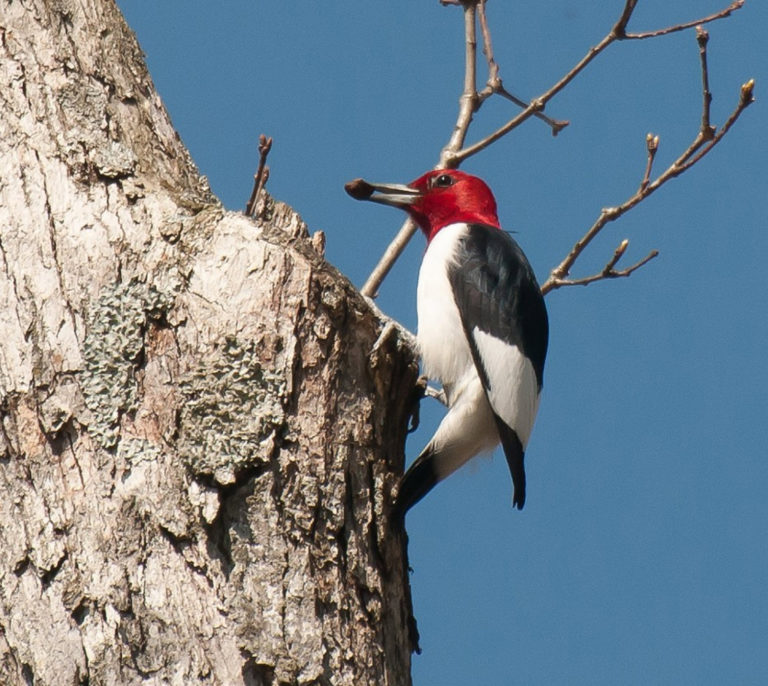Text and images by Joe Costanza
World Series of Birding – The Rancocas Conservancy Brown Creekers
The World Series of Birding requires a substantial amount of preparation; scouting various sites for resident species, seeking our “target” birds, and itinerary planning. During the two weeks before the event, as individuals, and sometime in pairs, we checked several locations in Burlington, Atlantic, Cumberland, and Cape May counties. Susan Setterberg, who had returned for the event from her new home in Washington State, carefully planned a detailed timed itinerary that would take us through a variety of birding habitats.
Being a notoriously late starter for a birder, I set my alarm for 3:00 AM, hoping that would give me enough time for a cup of coffee before our team rendezvoused in Tabernacle at 4:15. It was to be my 21st World Series of birding, and the weather forecast was not encouraging.
At Cliff Jones’s driveway, we quickly transferred binoculars, spotting scopes, liquids, snacks, and four dozen freshly baked oatmeal cookies to the back of Cliff’s SUV and made off to our first destination, Pakim Pond in Lebanon State Forest. Our first bird was a singing American Robin. Yes, they are early risers. Then we got our first target bird, a singing Whip-poor-will, and soon the predawn was filled with the songs of dozens of other birds. Before sunrise we had identified over a dozen unseen birds by their vocalizations.
The World Series of Birding has specific rules about bird identification. Ninety-five percent of the birds must be identified by sound or sight by all of the team members. Five percent of a team’s total species can be counted if identified by only two team members, but a bird identified by only one team member is not countable. So it was with some personal trepidation that we arrived at our second stop, the Bear Swamp Preserve in Medford. My hearing is not what it used to be, and I knew I would not be able to hear the thin, high-pitched songs of some of the migrant warblers. It was early daylight as we parked along Hawkins Road. The easily-heard and enthusiastic songs of Prothonotary and Hooded Warblers greeted us. As we walked down the forest path, Karenne Snow called out, “Blackpoll Warbler, up high!” Karenne had heard it, and so did Susan, but Cliff and I did not. Luckily, before we walked away a small bird with a black cap and black and white striped plumage suddenly and briefly descended to a nearby branch to give us a clear view. Cliff and I exclaimed in unison, “Got it!”
As the morning wore on, we wound up our quest for songbirds and shifted our focus to shorebirds. Entering the Heislerville WMA a striking male Ring-necked Pheasant gave us a good sighting and soon thereafter we were scanning with spotting scopes the hundreds of shorebirds foraging on the marsh mudflats. Cook’s Beach on the Delaware Bay rewarded us with Ruddy Turnstones and the endangered Red Knot. A Piping Plover was present at Stone Harbor, where Black Scoters and Ruddy Ducks swam close to the beach. At Nummy’s Island we found the uncommon Stilt Sandpiper and a Whimbrel, and later at Avalon another target bird, the Yellow-crowned Night Heron.
Now we headed north on the Parkway to our last major destination, the Forsythe NWR, or “Brig” as many birders know it. An American Avocet was an unusual find for this location. As night fell on the refuge, we paused to watch several night herons leave their daytime roosts and descend along the banks of east canal to forage. We again listened for night birds. Owls had eluded us during the morning, and we came up empty again at night—a typical World Series with some unexpected sightings and some unexpected disappointments. However, Brig gave us our 145th and last bird of the day, a singing Chuck-wills-widow.
On the drive back to Cliff’s house we stopped in Tabernacle hoping to hear the “peent” sound of a Common Nighthawk, but listened instead to several caravans of off-roaders roaring down Carranza Road. At Cliff’s house, we faxed our official checklist to New Jersey Audubon before the midnight deadline, and as I drove home the rain that had fortunately held off all day came down. The next morning at the New Jersey Audubon awards brunch in Cape May we learned that our team had won for the fifth time the Senior Challenge award for birders over age 60.


